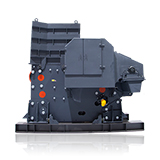Common Raw Materials for Sand Making Machines
Sand making machines, also known as sand crushers or vertical shaft impact crushers (VSI crushers), play a critical role in the production of manufactured sand. Manufactured sand is an essential raw material in construction, replacing natural river sand and meeting the increasing demand for high-quality sand in infrastructure projects. Understanding the raw materials suitable for sand making machines is crucial for optimizing production efficiency, product quality, and operational longevity.
This article provides a detailed exploration of the raw materials used in sand making machines, their properties, and considerations for selection.

1. Introduction to Sand Making Machines
Sand making machines are designed to crush, grind, and shape various types of rocks and minerals into fine, angular sand particles. These machines typically employ impact crushing technology, where materials are accelerated and collided at high speeds to break down into smaller sizes.
The choice of raw materials for sand making machines depends on the intended use of the manufactured sand, the machine’s design, and the desired physical and chemical properties of the final product.
2. Common Raw Materials for Sand Making Machines
2.1 Hard Rocks
Hard rocks are the most commonly used raw materials for sand making machines due to their durability and strength. They produce high-quality sand with good mechanical properties suitable for construction.
- Granite: Known for its hardness and abrasion resistance, granite is ideal for producing high-strength manufactured sand. It yields angular particles that improve concrete’s bonding properties.
- Basalt: Basalt is a volcanic rock with excellent crushing resistance and wear resistance. Sand made from basalt is dense and has high compressive strength, making it suitable for heavy-duty construction.
- Quartzite: Quartzite is a metamorphic rock composed mainly of quartz. It is hard and chemically inert, producing sand with high purity and strength.
- Gneiss: Gneiss has a banded texture and is relatively hard, making it suitable for sand production where angularity and strength are required.
2.2 Medium Hardness Rocks
Medium hardness rocks are also used in sand making machines, especially when cost considerations or local availability are factors.
- Limestone: Limestone is softer than granite or basalt but widely available and economical. It produces sand with good workability, though it may have lower abrasion resistance.
- Sandstone: Sandstone is composed of sand-sized minerals or rock grains and is moderately hard. It can be crushed to produce sand for general construction purposes.
2.3 Soft Rocks and Minerals
Soft rocks and minerals are less commonly used due to their lower strength and durability but may be suitable for specific applications.
- Shale: Shale is a fine-grained sedimentary rock that can be crushed to produce sand for landscaping or non-structural purposes.
- Phyllite: A low-grade metamorphic rock, phyllite can be used in sand making where flexibility in material sourcing is needed.

3. Material Properties Affecting Sand Making
When selecting raw materials for sand making machines, several physical and chemical properties must be considered to ensure optimal performance.
3.1 Hardness
Hardness affects the ease of crushing and the wear on machine components. Harder materials require more energy to crush but produce more durable sand. The Mohs hardness scale is commonly used to evaluate rock hardness.
3.2 Abrasion Resistance
Materials with high abrasion resistance reduce wear on crusher parts and prolong machine life. This is particularly important for sand making machines that operate continuously.
3.3 Moisture Content
Excess moisture in raw materials can cause clogging and reduce crushing efficiency. Materials should ideally have low moisture content or be pre-dried before processing.
3.4 Chemical Composition
The chemical makeup affects the durability and compatibility of the manufactured sand in concrete and other applications. For example, high silica content is desirable for strength, while excessive clay or silt can weaken the product.
4. Preparation of Raw Materials
4.1 Screening and Sorting
Raw materials are typically screened to remove oversized particles, impurities, and unsuitable materials before feeding into the sand making machine.
4.2 Crushing and Pre-Processing
Large rocks may require primary crushing to reduce size before sand making. Pre-processing ensures consistent feed size and improves machine efficiency.
4.3 Washing and Drying
Washing removes clay, silt, and other contaminants that can affect sand quality. Drying may be necessary to reduce moisture content for optimal crushing.
5. Considerations for Raw Material Selection
5.1 Availability and Cost
Local availability of raw materials significantly affects the choice. Using locally sourced materials reduces transportation costs and environmental impact.
5.2 End-Use Requirements
The intended use of manufactured sand dictates the choice of raw materials. For structural concrete, high-strength rocks like granite or basalt are preferred. For landscaping or fill, softer materials may suffice.
5.3 Environmental Impact
Sustainable sourcing and minimizing environmental disruption are increasingly important. Using quarry waste or recycled materials can reduce environmental footprint.
The selection of raw materials for sand making machines is a critical factor influencing the quality, efficiency, and sustainability of manufactured sand production. Hard rocks like granite, basalt, and quartzite are preferred for their strength and durability, while medium and soft rocks may be used depending on application requirements.
Proper preparation, including screening, crushing, washing, and drying, enhances machine performance and product consistency. Advances in material science and processing technology continue to expand the range of usable raw materials, including industrial byproducts and recycled aggregates.
By carefully considering material properties, availability, environmental impact, and end-use requirements, operators can optimize sand making processes to meet the growing demand for high-quality manufactured sand in the construction industry.







